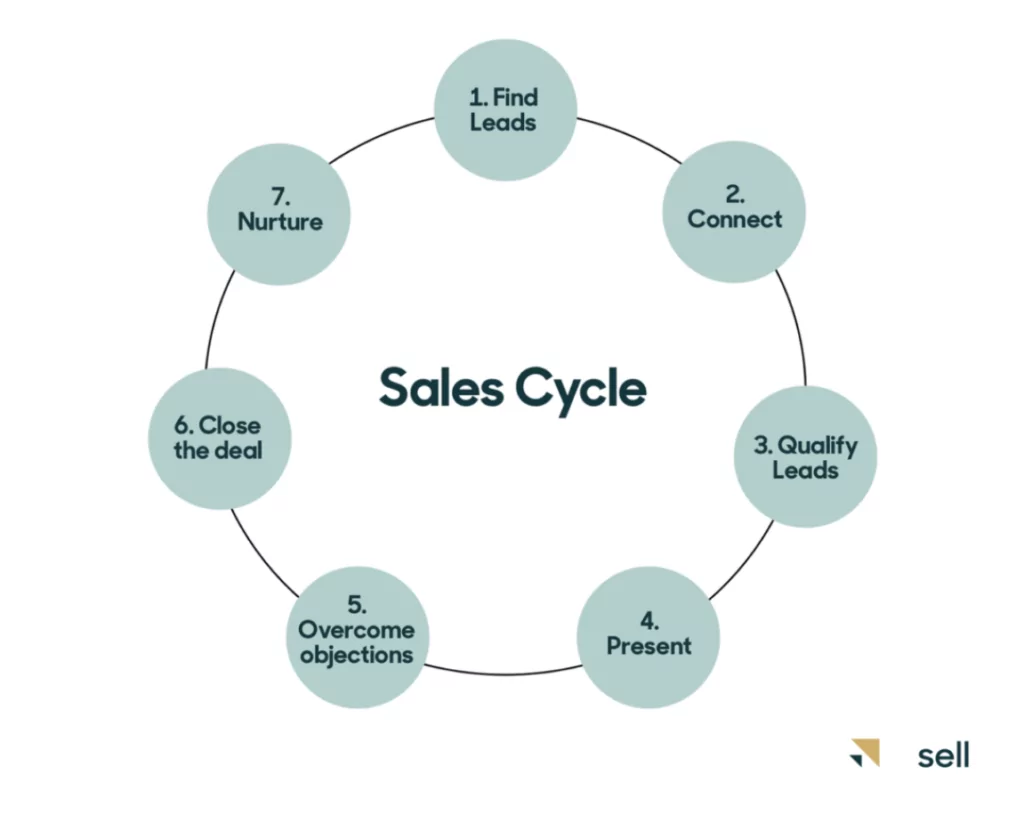Each business is unique and needs a sales process to match its individual needs. What worked for another company might not work for you. For example, you have different franchise locations, distribution channels, and numbers of sales agents. These factors will drastically alter how a sales process performs between businesses.
We’ll walk you through seven steps to create the perfect sales process just for your business.
Key Takeaways:
- Sales processes are built around seven key components that start with researching the audience and end with a retention strategy.
- Customize the sales process components to your business’s unique goals and audience.
- A data and lead management tool help business track leads across their journey so marketers can personalize the sales process for each lead.
Why Your Business Needs a Customized Sales Process
The sales process is a map taking businesses from point A to point B. While maps are standardized, routes are always different depending on the destination. In the same way, sales processes have some standard components. However, the execution of that process varies between businesses.
For example, a small location-based retail business will have a different sales process than a large national franchise with multiple locations.
Because of these variances, each business needs to customize the sales process. Personalizing the process ensures marketers optimize each stage for the customers’ unique journeys. When companies invest in a sales process, they also see more revenue.
What Are the 7 Steps of the Sales Process?
Before diving into how to add your unique twist to the sales process, here’s an overview of the seven stages of the sales process:
- Audience Research: Understand who your business sells to. Researching the audience allows marketers to personalize the sales approach.
- Prospect: Find, attract, and capture new leads and warm them up to the business’s products and services. Research online to find the best places to connect with quality leads.
- Lead Qualification: Sort through new leads to identify those with a potential to buy. Qualify leads by tracking behaviors and characteristics, then establish a benchmark to move the leads to the next qualification stage.
- Pitch: The sales team takes over and switches gears from warming up prospects to converting them into customers.
- Objection Handling: Marketers expect objections as these are part of the sales process. Take time to address concerns.
- Close the Deal: Finally, the lead makes a purchase, and money is exchanged.
- Nurturing: Keep new customers satisfied, so they continue buying products, recommend you to friends, leave positive feedback, and become loyal customers.
Image from Zendesk
Alt-Text: The seven-step sales process
7 Steps to Audit Your Sales Process
Follow these seven steps to customize the sales process for your business.
1. Unite All the Involved Parties
For the sales process to work, it requires collaboration from several departments and franchise locations. For example, sales and marketing must collaborate to create a seamless handoff between the qualification and pitching stages. By uniting forces–and data–the two teams better understand what customers need at each stage and can make smarter sales choices.
In addition, the franchise will find ways of unifying all locations so locations can share data and leads. MXTR can help with unifying franchise locations through a centralized lead management system.
2. Know What You Currently Do
With all the teams working together, you can examine what processes are currently in place. Create an outline so team members can see how the current strategies interconnect. Next, closely study how well each approach works and whether there are areas in the sales process that aren’t as effective.
For example, 40% of sales agents say prospecting is the most challenging part of the process, so marketers should research new opportunities for prospecting.
3. Establish Where You Want to Be
What are your business’s sales goals? Then, the sales process should align with those goals. For example, the marketing team needs to know how many leads to generate and the sales they need to close each quarter to meet the business’s revenue goals.
In addition to revenue goals, consider other objectives, like whether the business wants to make as many sales as possible or is focusing on building customer loyalty.
4. Map the Buyer’s Journey
To better understand what process works best with your customers, map their current journey. A customer journey map looks at all the touchpoints between first contact and closing a sale. The map helps marketers identify key points for effective communication and approaches.
To map a customer’s journey, marketers need a lead management tool like MXTR offers to track leads through every interaction.
5. Build the Stages of the Process
Now your team is ready to build the process stage by stage. At this point, your marketing team should examine the common sales stages, decide which stages apply to your business, and whether to add, subtract, or move any stages.
After establishing the relevant stages, start filling in details for each stage, such as individual goals for the stages and specific rules for what campaigns to run in response to different behaviors. Also, establish at what point leads move from one stage to the next. On average, only a quarter of leads move to the next stage of the sales process.
A crucial part of outlining the stages is establishing benchmarks. The benchmarks for each stage determine how successful the individual components of the sales process are, such as what percentage of total leads move to the next step.
6. Test Different Methods
Before implementing a new franchise-wide strategy, test a small market segment to see how customers respond. For example, do customers respond best to phone calls or email communications? You might try both sales approaches, compare the results, then choose the most effective one for part of the sales process.
In addition, test different methods of sales process management. You might look at how to improve how the sales teams perform tasks and distribute leads. For instance, automating tasks will cut down on response time and reduce the sales rep’s workload so they can focus more on selling.
Source: SalesHacker
7. Track the Results
Keep up on how the process is working and adjust accordingly. Here are a few questions to ask while reviewing the sales process to determine how well the process is performing:
- How long do leads spend in each sales step?
- When do leads most often leave?
- What percentage of leads make it to the next step?
- What strategies receive the best response?
Customize Your Sales Process
MXTR helps you customize and seamlessly run a sales process across a large franchise. Our innovative technology allows marketers to track leads and move leads from stage to stage and between agents easily and without the risk of losing valuable prospects.
Schedule a demo to see how our software can improve your franchise’s sales process.
Feature Image: istockphoto









